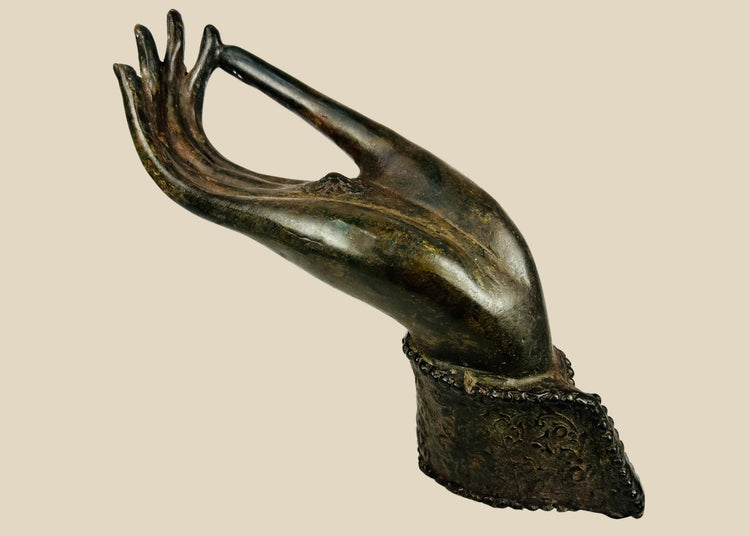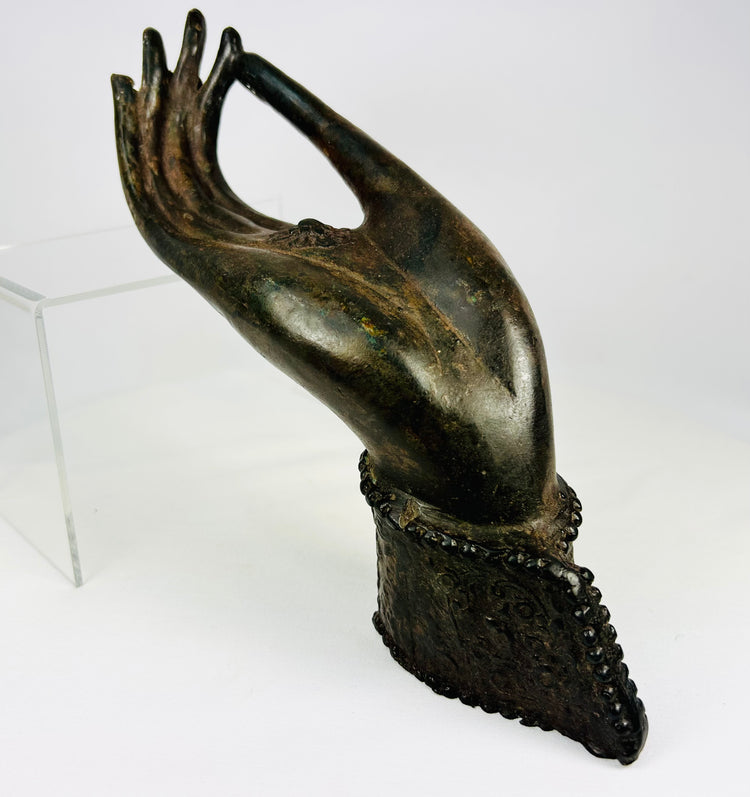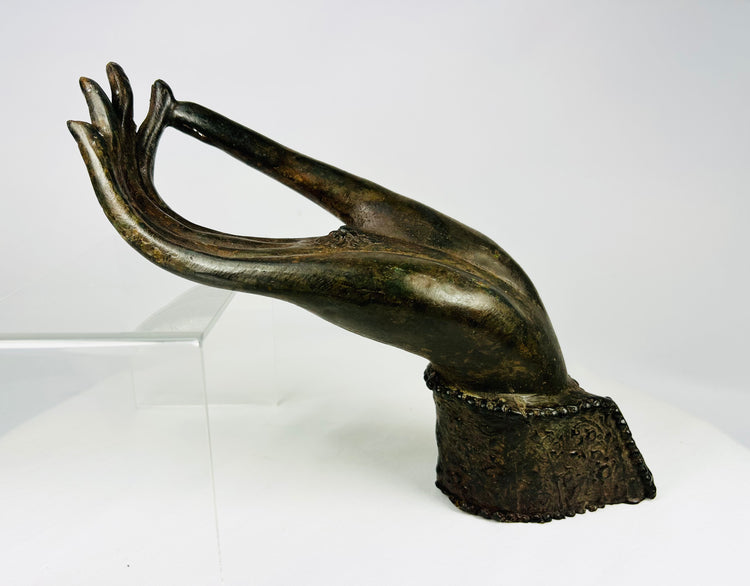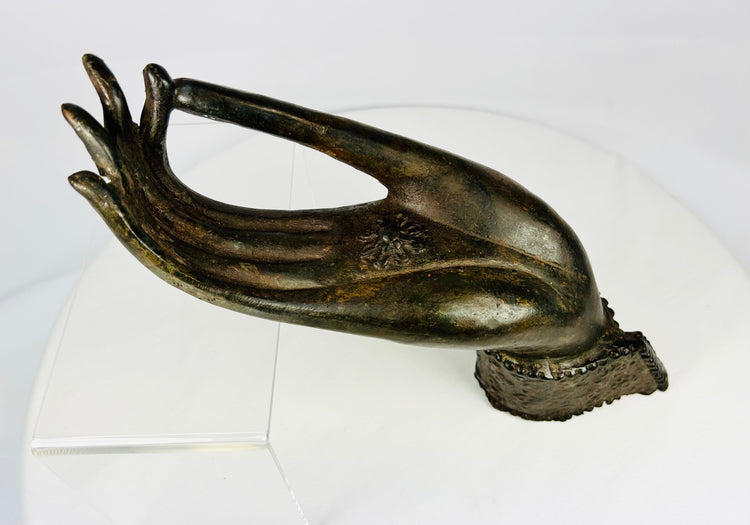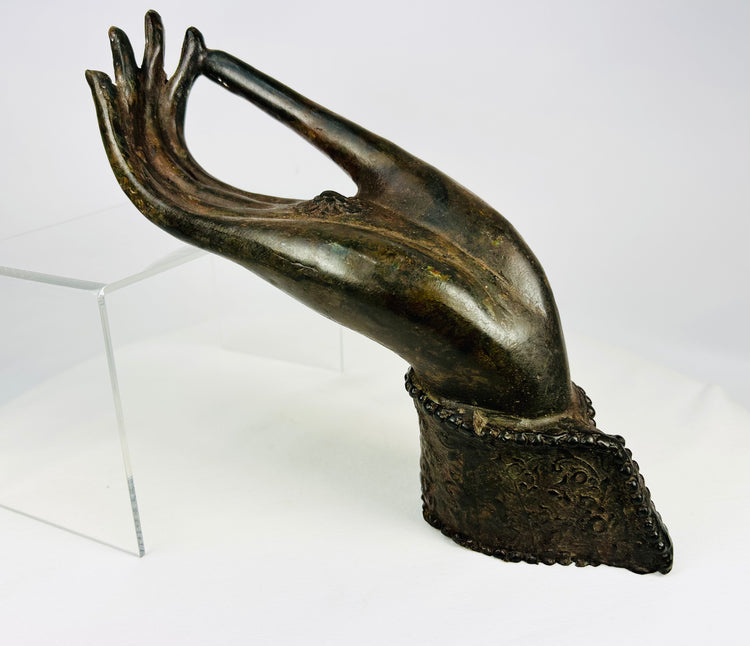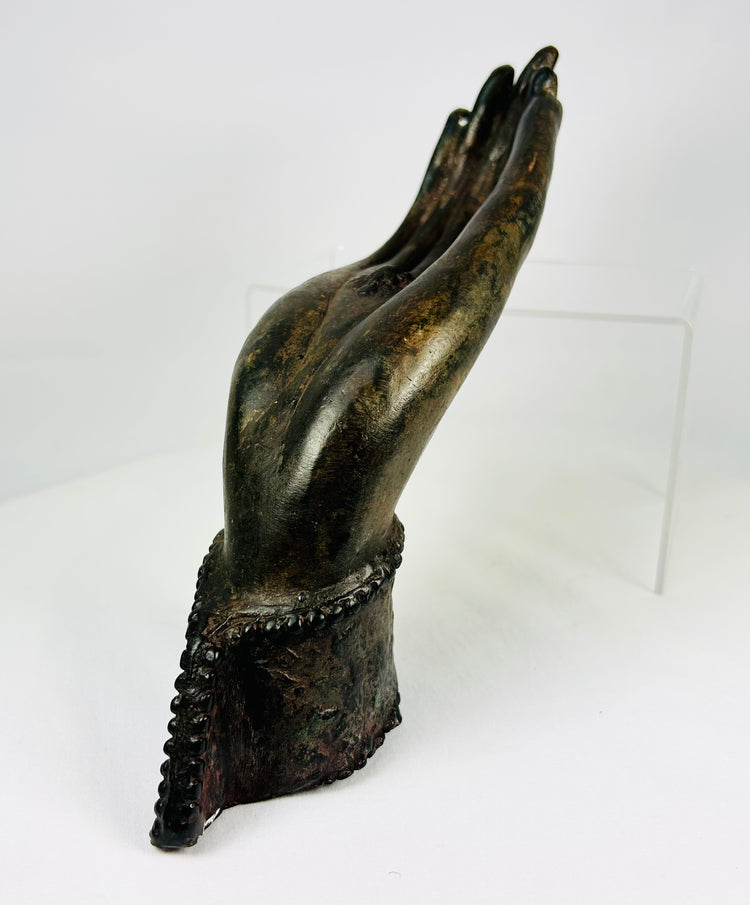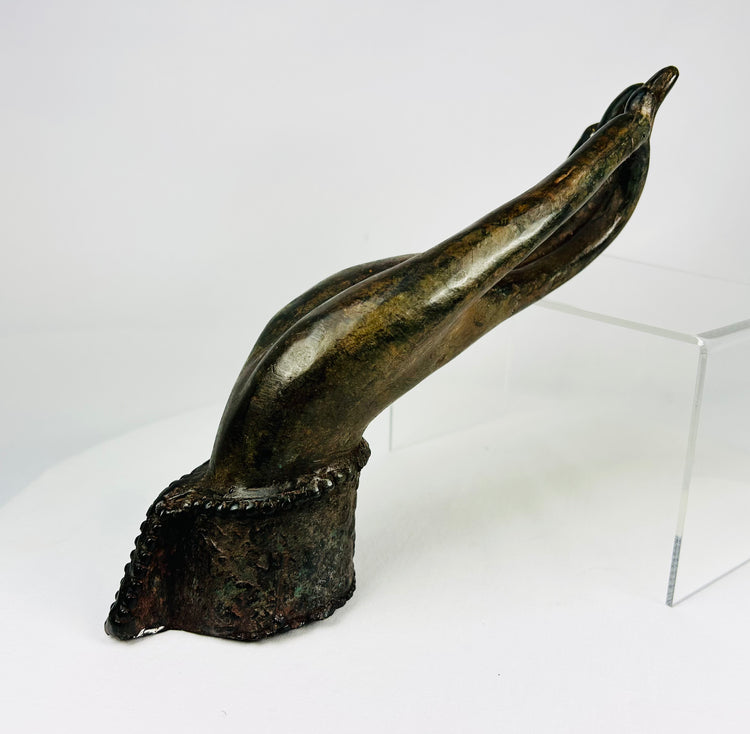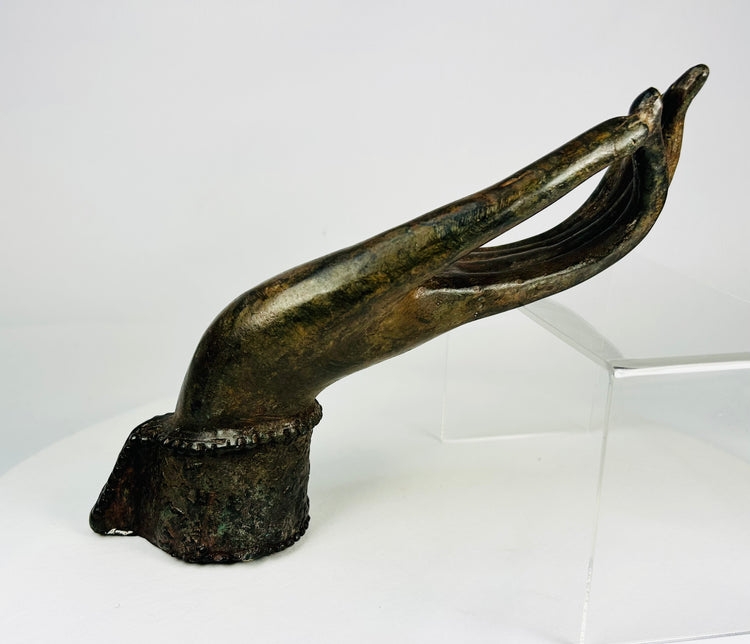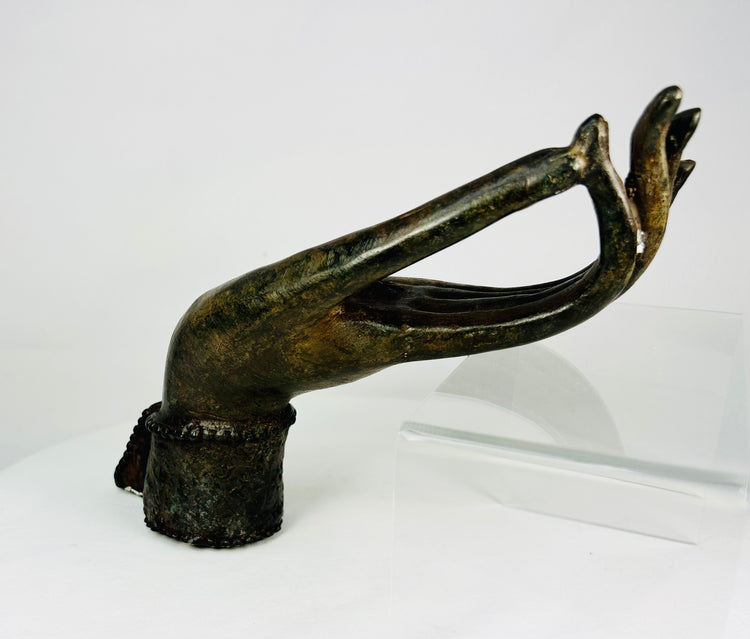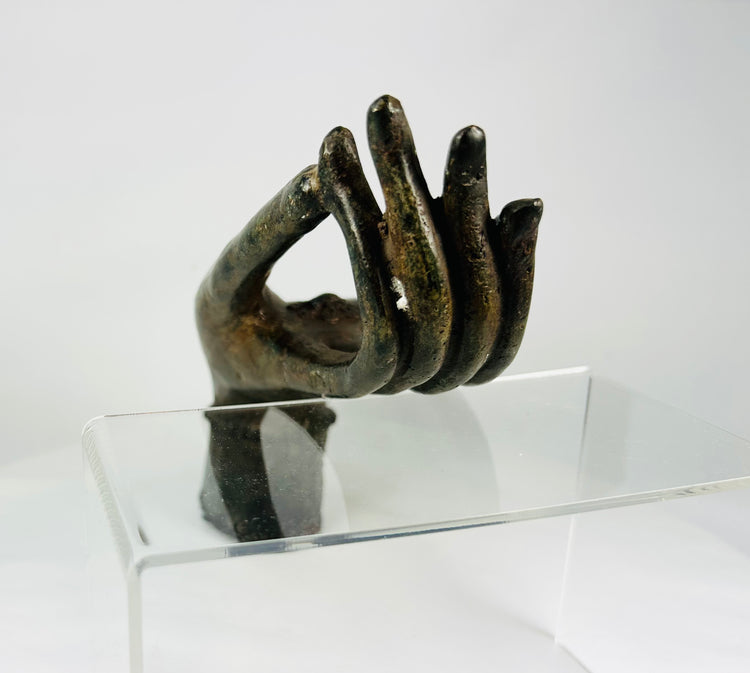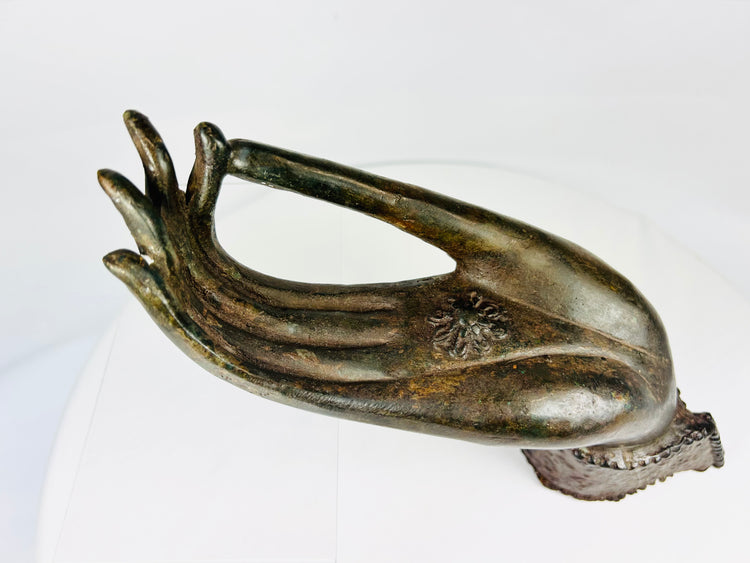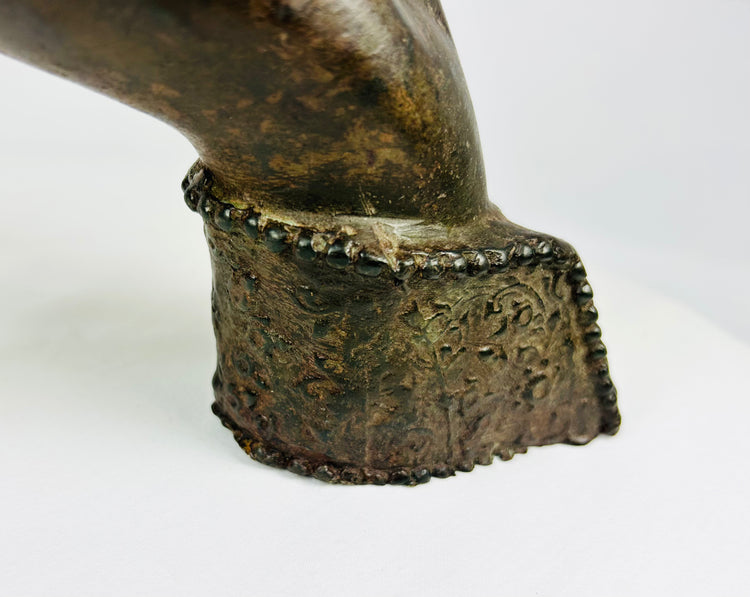Bronze Hand from Buddhist/Hindu Figure | Rosette Palm | Circa 18th–19th Century
Description
More
Less
Historical Context & Origin
Region: Mainland Southeast Asia — likely Northern Thailand/Laos (Lanna/Lan Xang tradition)
Material: Solid cast bronze with rich brown-olive patina; traces of old lacquer and accretions
Period: 18th–19th century (Ayutthaya to early Rattanakosin/Lanna)
Description
A powerful fragment of a large bronze Buddha or Bodhisattva statue, preserving the right hand in an eloquent gesture of reassurance or teaching. The long, tapering fingers curve with elegant naturalism, while the palm bears a rosette or chakra emblem—an auspicious sign common in Southeast Asian Buddhist iconography.
The wrist retains its original sculpted cuff with a beaded border and tool-finished seam where it once joined the forearm of the larger figure. While photographed horizontally, the hand would have been oriented upright on the original sculpture, most consistent with the Abhaya (fear-dispelling) or Vitarka (teaching) mudrās. The slender proportions, elongated fingers, and sleek modeling are characteristic of Northern Thai/Lao aesthetics.
Features
- Bronze Buddha hand fragment with chakra/rosette on palm
- Graceful, elongated fingers in classic Lanna/Ayutthaya style
- Original wrist cuff with beaded edge and finishing seam
- Deep, aged patina with earthen accretions and malachite highlights
- Strong sculptural presence, ideal for display on stand or shelf
Cultural Significance
In Southeast Asian Buddhist art, the open hand with a chakra signifies spiritual authority and protective power. Gestures of Abhaya and Vitarka express both reassurance and the transmission of the Dharma, making such fragments enduring symbols of enlightenment, wisdom, and compassion.
Condition
Very good fragmentary condition for its age. Surface shows wear, minor nicks, casting pits, and stable patina with encrustations. Tool marks and small losses visible at wrist from historical separation. Structurally stable and visually striking.
Dimensions (approximate)
Length (fingertips to wrist): 9 in
Height (as displayed): 6.5 in
Age
18th–19th century, Southeast Asian Buddhist tradition (Northern Thailand/Laos)
Description
Historical Context & Origin
Region: Mainland Southeast Asia — likely Northern Thailand/Laos (Lanna/Lan Xang tradition)
Material: Solid cast bronze with rich brown-olive patina; traces of old lacquer and accretions
Period: 18th–19th century (Ayutthaya to early Rattanakosin/Lanna)
Description
A powerful fragment of a large bronze Buddha or Bodhisattva statue, preserving the right hand in an eloquent gesture of reassurance or teaching. The long, tapering fingers curve with elegant naturalism, while the palm bears a rosette or chakra emblem—an auspicious sign common in Southeast Asian Buddhist iconography.
The wrist retains its original sculpted cuff with a beaded border and tool-finished seam where it once joined the forearm of the larger figure. While photographed horizontally, the hand would have been oriented upright on the original sculpture, most consistent with the Abhaya (fear-dispelling) or Vitarka (teaching) mudrās. The slender proportions, elongated fingers, and sleek modeling are characteristic of Northern Thai/Lao aesthetics.
Features
- Bronze Buddha hand fragment with chakra/rosette on palm
- Graceful, elongated fingers in classic Lanna/Ayutthaya style
- Original wrist cuff with beaded edge and finishing seam
- Deep, aged patina with earthen accretions and malachite highlights
- Strong sculptural presence, ideal for display on stand or shelf
Cultural Significance
In Southeast Asian Buddhist art, the open hand with a chakra signifies spiritual authority and protective power. Gestures of Abhaya and Vitarka express both reassurance and the transmission of the Dharma, making such fragments enduring symbols of enlightenment, wisdom, and compassion.
Condition
Very good fragmentary condition for its age. Surface shows wear, minor nicks, casting pits, and stable patina with encrustations. Tool marks and small losses visible at wrist from historical separation. Structurally stable and visually striking.
Dimensions (approximate)
Length (fingertips to wrist): 9 in
Height (as displayed): 6.5 in
Age
18th–19th century, Southeast Asian Buddhist tradition (Northern Thailand/Laos)
You May Also Like






























